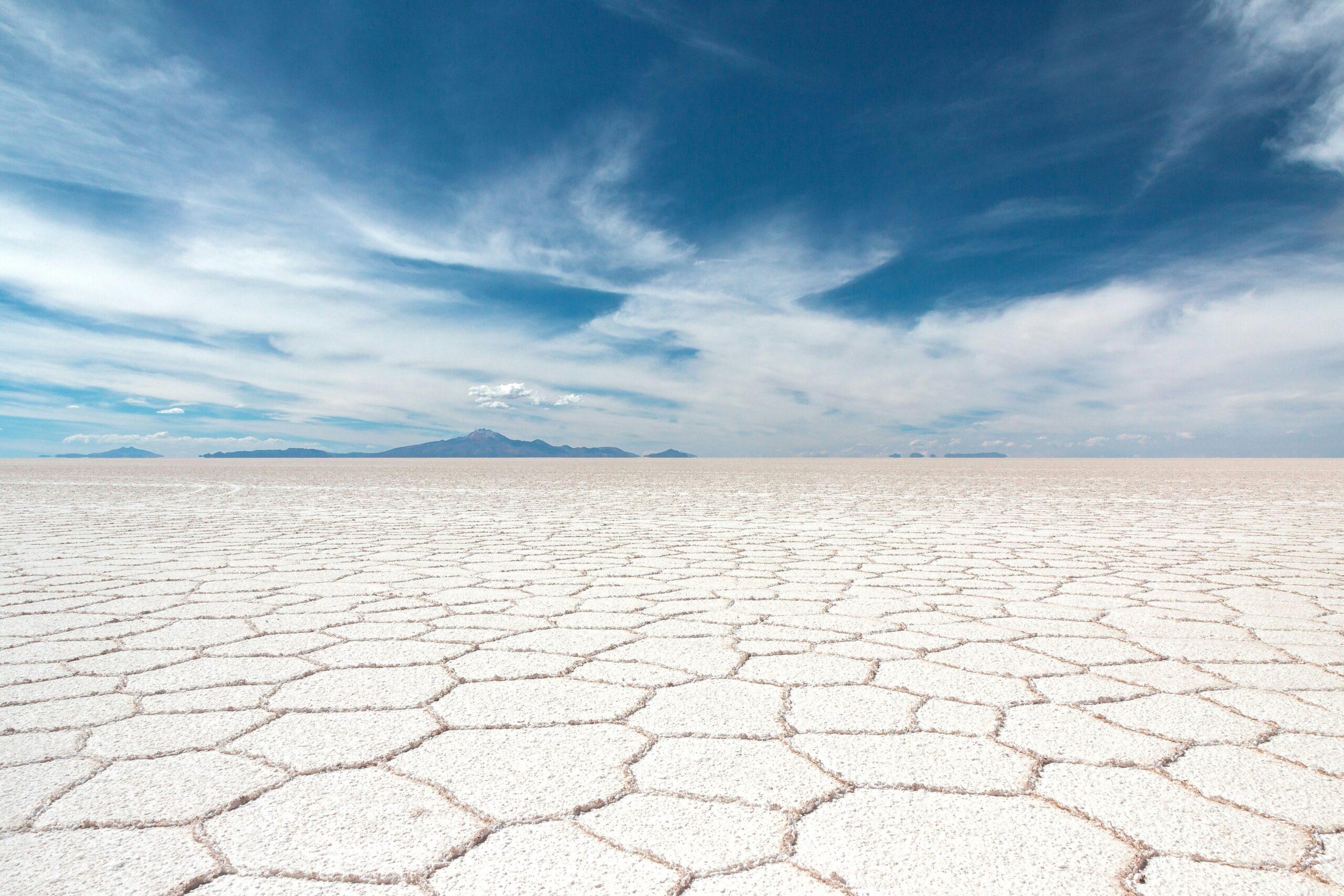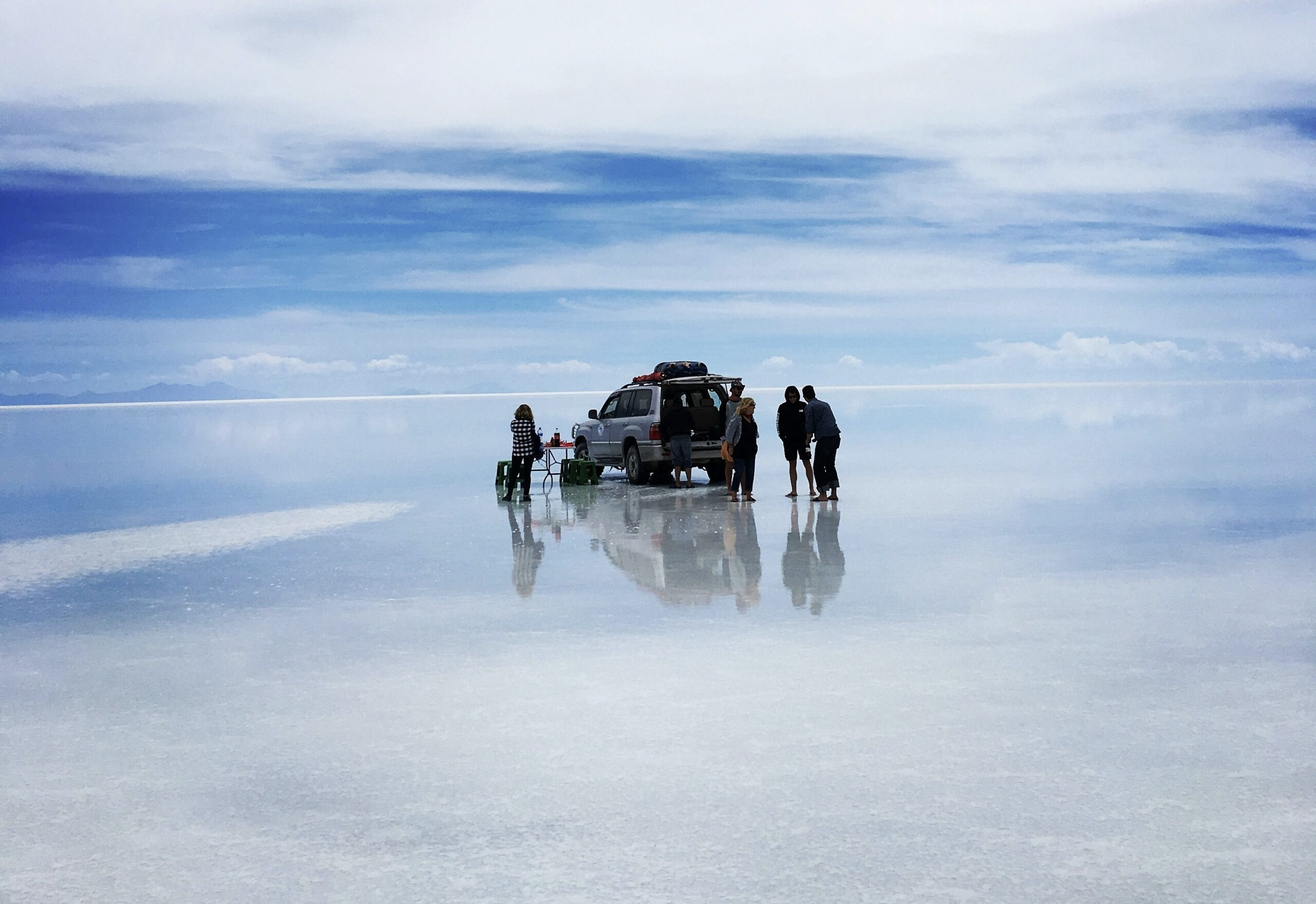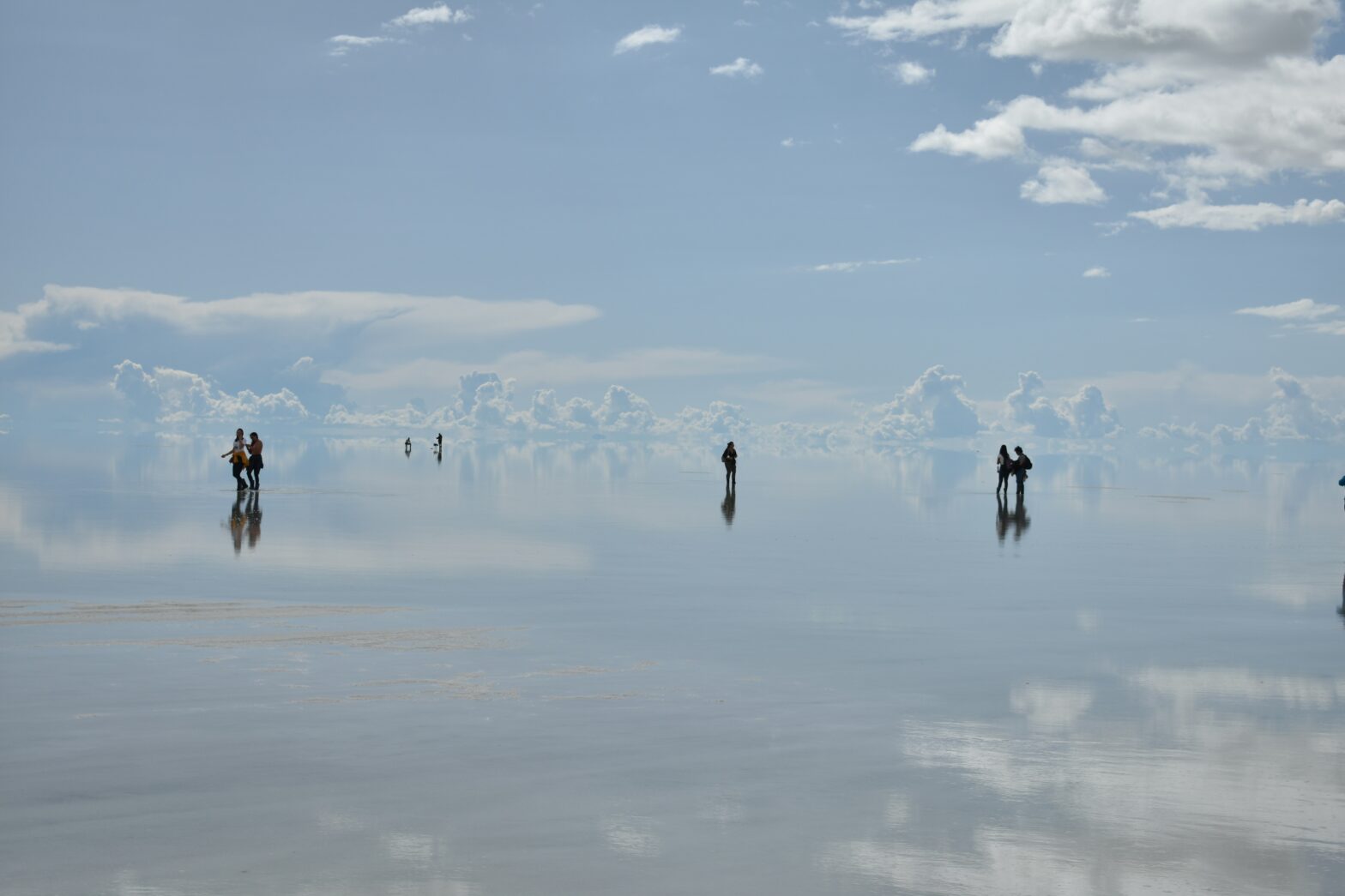The Uyuni Salt Flats is a famous site that imitates the heavens. The site is technically called the Salar De Uyuni Salt Flats. Salar means salt flat in Spanish while Uyuni is the closest town. This well-known salt flat is quite expansive; in fact, it is the world’s largest salt flat and covers over 4,000 miles. It can even be seen from space! The salt flat is located in southwestern Bolivia, a landlocked country in South America that tourists find is quite breathtaking and welcoming, and is considered the country’s most exciting attraction.
The stark white salt formations are the result of the evaporation of prehistoric lakes. It is located where Lake Minchin once was 40,000 years ago. This unique ecosystem is an otherworldly experience for many travelers. The world’s largest supply of lithium, Salar De Uyuni Salt Flats is also a great natural resource. It is a large reservoir for the precious metal that is used for electronic devices. It is the lightest known metal and also is a game-changer in the transition to greener energy. Although, as nature lovers and environmentalists may know, mining lithium can have catastrophic impacts. So, travelers should take that into consideration before planning a trip to Bolivia. For some, that may impact how they enjoy this site.
The salt flat’s illusion of a mirror or heaven on earth is why it has become such a swoon worthy destination. Some tourists that have seen this salt flat even consider it to be sacred. The Salar De Uyuni Salt Flats are an unforgettable experience for tourists. Given the wondrous views that the Uyuni salt flats offer, it is no surprise that travelers are so curious about it.
What Travelers Need To Know

Travelers that intend to visit the Uyuni salt flats should be great packers. Due to the unique conditions of the Bolivian attraction, travelers need to protect themselves from the elements. In general, travelers should be sure to bring plenty of sunscreen, lip balm, and a nice hat to block out the sun. Bringing those supplies will help travelers feel prepared for the salty yet varying outdoor conditions. Some supplies may be available at stores near town. But it is critical to note that travelers commonly cite the air is dry and at times uncomfortable near the salt flats.
Travelers should also consider that the weather is quite different from day to night. The temperature fluctuates noticeably throughout the day. Visiting the salt flats means that tourists may need to endure extreme warm and cold temperatures to witness the stunning views. This means travelers should be sure to bring an array of clothing options. Dressing in layers is recommended. During the day travelers should expect to experience the hot sun while at night the temperatures can reach below zero.
The altitude of the salt flat is also a concern for travelers. Depending on the departure location and tour, there is a risk of altitude sickness. It is recommended that tourists start their journey by spending time in San Pedro de Atacama or Uyuni so that their bodies can adjust to the altitude. There is a high elevation of nearly 12,000 feet above sea level so travelers should watch out for symptoms of altitude sickness. These symptoms include nausea, headache or vomiting. If travelers get altitude sickness quite easily, it is best to plan for their trip with their doctor (medication is available). But it is really important to have a couple of days ahead to adjust. Once travelers get to the salt flat there are ways to avoid altitude sickness. Visitors should stay hydrated, eat balanced meals, avoid caffeine or alcohol and try not to overexert themselves.
How To Get To the Salar de Uyuni Salt Flats
The salt flats are located in a relatively remote place but the site is accessible. Travelers can get to the Bolivia salt flats from Peru, Chile, and Argentina quite easily. From those countries, the most popular route is from San Pedro de Atacama in Chile. It is also accessible through multiple parts of Bolivia. But the most common way to get to the Salar De Uyuni Salt Flats is from La Paz in Bolivia. From La Paz travelers can fly or take the overnight bus to Uyuni. Once Uyuni is reached travelers can choose from a variety of tours. Uyuni is very close to the salt flats, so it is possible to take day trips between them. It costs about $20 cash to enter the national park area.
Things To Do

There is an array of tours that are available to travelers. Some travelers prefer one day tours if they want to spend less time exploring the salt flats. These shorter tours give travelers the chance to take entertaining photos and witness the stunning surroundings. For tourists that opt to book the longer tours, there are many length options. The three or four day tour is the most popular option.
Travelers should be sure to inquire about how many people will be in the tour vehicle, the type of overnight accommodation, the driver’s language and where the tour ends. Tours that last a few days cost around $200 (that is, for a three day tour) if booked in Bolivia, which will most likely be less expensive than online. Prices often include food, accommodation, transportation and a guide. Usually during these tours travelers take a ride with an experienced driver out on the salt flat. Staying in a salt hotel is a really cool experience that is included in some tours.
These accommodations are made entirely out of salt blocks and add to the allure of the destination. Since much of the area is undeveloped, most of the fun is in the journey and exploration of the destination. It is also important to note that there is no wifi in the salt flats. So this trip is a great opportunity to disconnect from devices and foster human connection.
Best Time To Visit the Uyuni Salt Flats
The salt flats look like the trendy photos online only seasonally. For tourists looking to capture the mirror effect of the Salar De Uyuni Salt Flats, it is best to visit during the wet season. Between March and April travelers have the best opportunity to capture the coolest mirror photos. Another time that tourists may want to consider traveling during is the dry season. Technically this is between May to November, but many tourists say the best weather is during a smaller span in that season. Between July and October travelers should be able to experience the mildest temperatures.
